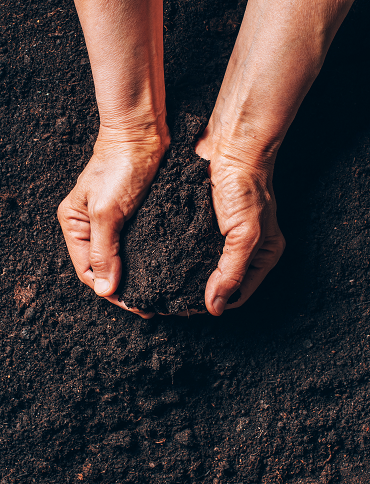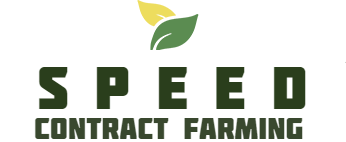Cow Dung: The Catalyst for Sustainable Vermicompost Production
In the quest for sustainable waste management and nutrient-rich soil enhancement, vermicomposting has emerged as a dynamic solution. Central to the success of this process is the unassuming yet potent cow dung, which serves as the primary input for large-scale vermicompost production. As the demand for organic fertilizers and eco-friendly waste disposal methods continues to rise, the integration of vermicomposting units near dairy facilities adds an extra layer of advantage to the equation.
The Synergy between Dairy and Vermicomposting
Dairy units, often producing significant amounts of cow dung, offer a golden opportunity for synergistic collaboration. By establishing vermicomposting units in close proximity to these dairy operations, a seamless cycle of waste management and resource generation can be initiated. The surplus cow dung from the dairy becomes a valuable raw material for vermicompost production, reducing the ecological footprint of both sectors.
Moreover, this proximity minimizes transportation costs and logistical challenges. The cow dung, readily available on-site, can be swiftly processed into nutrient-rich vermicompost, which can then be efficiently utilized to enrich the soil and enhance agricultural productivity. This integration embodies the essence of sustainable circular systems, where waste becomes wealth in a harmonious loop.
The Crucial Components of Commercial Vermicomposting
When considering the leap into commercial vermicompost production, a well-thought-out blueprint is essential. While the alchemy of earthworms turning organic matter into nutrient gold is fascinating, it requires a strategic setup. Several mandatory components need to be established to ensure the smooth operation of a vermicomposting unit geared for commercial success.
1. Vermi-Bed Infrastructure: Central to the operation are the vermi-beds, meticulously designed to provide an ideal habitat for earthworms. Adequate space, proper drainage, and well-maintained bedding materials are the bedrock of efficient vermicomposting.
2. Earthworm Population Management: Introducing earthworms at the right density initiates the composting process. Balancing the population size with the vermi-bed dimensions ensures optimal waste breakdown.
3. Monitoring and Maintenance: Regular monitoring of moisture levels, temperature, and worm activity is crucial. Maintenance tasks include turning the compost, replenishing bedding materials, and managing pest infestations.
4. Feeding System: A systematic approach to feeding earthworms ensures steady decomposition. The choice of feedstock, along with its preparation and distribution, influences the rate and quality of vermicompost production.
5. Harvesting Mechanism: Extracting vermicompost while preserving earthworm populations requires a well-designed harvesting system. This process demands finesse to avoid disrupting the ecosystem.
Counting the Costs: A Prudent Approach
While the vision of producing nutrient-rich vermicompost is alluring, financial feasibility is a critical consideration. Each of the aforementioned components comes with associated costs, both initial setup expenses and ongoing operational investments. Thus, when embarking on the journey of establishing a commercial vermicomposting unit, meticulous financial planning is a must.
From vermi-bed construction materials to earthworm procurement and monitoring equipment, every aspect should be accounted for. By accurately estimating these costs and factoring them into the venture’s financial projections, you can make informed decisions, ensure sustainability, and optimize the return on your
Conclusion
Vermicomposting stands at the intersection of environmental stewardship, agricultural enhancement, and waste management innovation. The utilization of cow dung from dairy units as a pivotal input underscores the interconnectedness of various sectors in the pursuit of sustainability.
As the demand for organic products and eco-conscious practices continues to grow, the role of vermicomposting becomes increasingly pivotal. By integrating with dairy facilities and embracing the mandatory components of efficient vermicomposting, commercial ventures can forge a path toward prosperity while contributing to a greener, healthier planet. With careful consideration of costs and meticulous planning, the journey from cow dung to nutrient-rich vermicompost can be both economically rewarding and ecologically impactful.
OUR RECENT PROJECTS
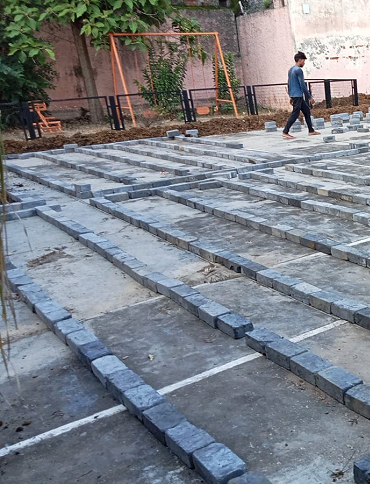
BED PREPARATION
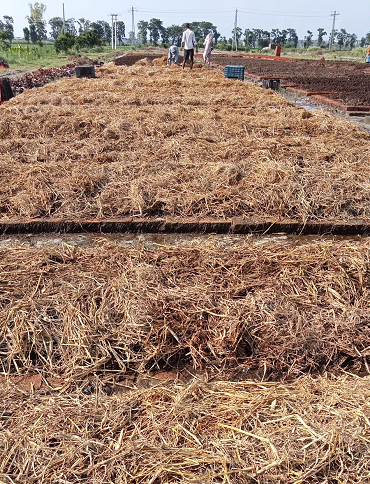
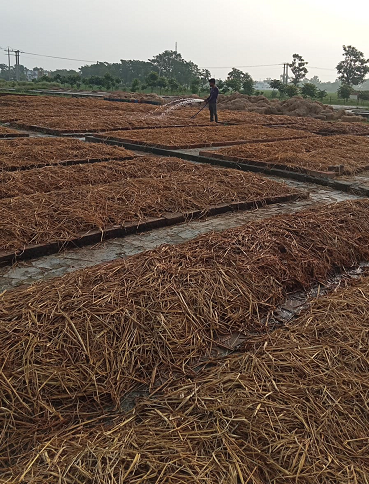
BED MANAGEMENT
